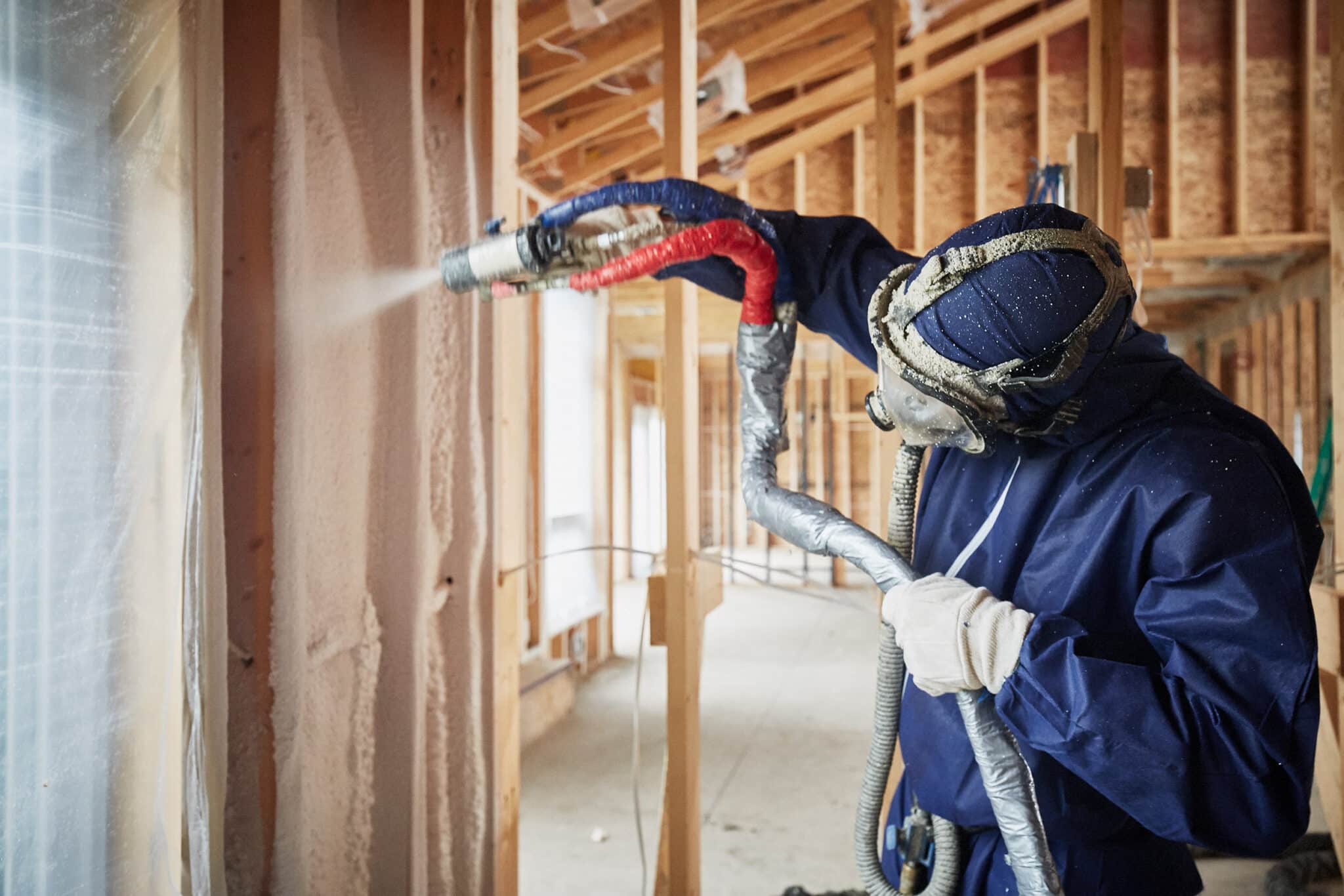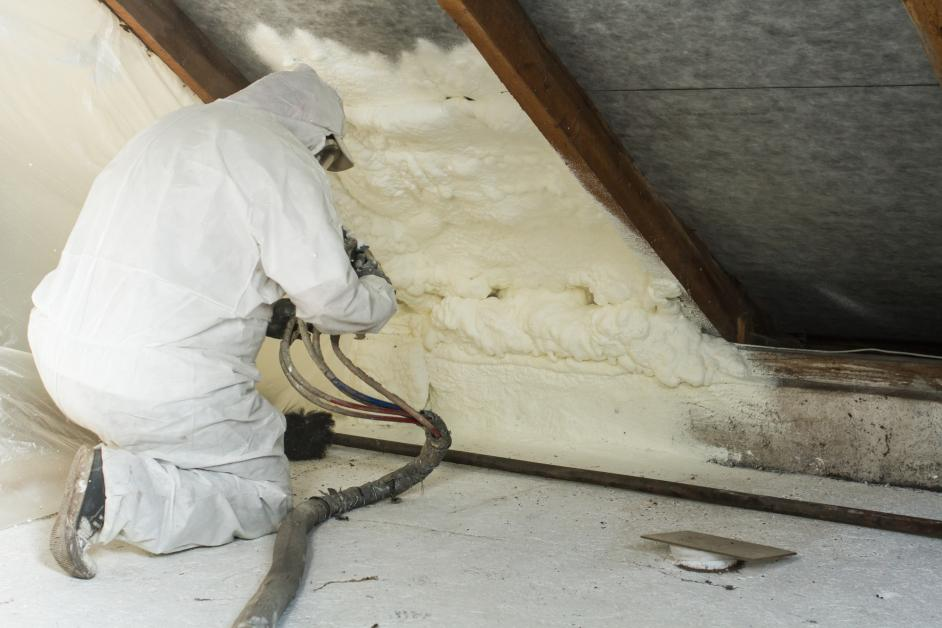Spray foam insulation is known for its high thermal resistance and air sealing capabilities. When evaluating options for new builds or retrofit projects, understanding the performance differences between interior and exterior applications is key. Each method offers unique advantages depending on project goals, budget, and environmental exposure.
Interior and Exterior Spray Foam Serve Different Roles in the Building Envelope
Insulating from the inside or outside impacts not only energy efficiency but also moisture control, air sealing, and retrofit compatibility. Choosing between these approaches depends on building type, weather exposure, and renovation constraints.
Interior Insulation Targets Air Leakage from Within
Interior spray foam is typically applied inside wall cavities, attic rafters, or basement rim joists. This method is well-suited for controlling conditioned air and reducing thermal bridging at structural joints.
- Applied directly between studs, beams, or joists
- Often easier for retrofits, especially when exterior cladding is intact
- Less exposure to weather during installation
- Common in residential wall assemblies using open-cell or closed-cell foam
Exterior Insulation Provides Continuous Thermal Protection
Exterior spray foam insulation services are typically part of a continuous insulation strategy. It wraps the building from the outside, covering studs and structural gaps to create a seamless thermal layer.
- Reduces thermal bridging across wall systems
- Can serve as both insulation and air barrier layer
- Used in high-performance and commercial wall assemblies
- Requires weather-compatible materials and precise detailing
Performance Comparison: Key Metrics That Define Application Suitability
While both interior and exterior spray foam systems contribute to energy savings, they perform differently under specific conditions. This section breaks down the major performance variables.
Air Sealing Effectiveness Depends on Application Method
Spray foam insulation is highly valued for its air barrier qualities. The effectiveness, however, changes depending on whether it’s applied inside the cavity or across the building’s exterior.
- Interior Foam: Controls interior air movement, sealing gaps from the conditioned space
- Exterior Foam: Blocks outdoor air infiltration before it reaches the structure
- Combined Strategy: Yields high-performance results in tight energy-efficient envelopes
Moisture Management Varies with Wall Assembly Type
Moisture control is critical in humid climates or where vapor drive reverses seasonally. Interior and exterior foam applications interact differently with moisture loads.
- Interior foam must be vapor-aware—closed-cell foam resists vapor diffusion
- Exterior foam acts as a continuous drainage plane and thermal break
- Climate zone determines whether interior or exterior foam creates better dew point control
Fire Safety and Code Compliance Affect Location Choice
Interior spray foam must meet fire barrier requirements such as ignition barriers or thermal barriers when exposed. Exterior foam systems must comply with cladding and flame spread requirements.
- Interior Use: Often requires additional fireproofing layers (e.g., gypsum board)
- Exterior Use: Needs code-approved exterior finishes to protect the foam
Comparison Table: Interior vs. Exterior Spray Foam Insulation
Climate and Building Type Influence the Best Insulation Strategy
The performance of spray foam insulation is heavily influenced by climate zone and structure type. Matching the right system to your building needs improves ROI and long-term energy savings.
Cold Climates Benefit from Continuous Exterior Coverage
In areas with prolonged heating seasons, continuous insulation helps reduce heat loss and manage dew point within the wall assembly. Exterior foam prevents condensation and protects thermal layers.
- Prevents thermal bridging across studs
- Moves dew point outside the structural cavity
- Protects framing from temperature fluctuations
Warm Climates Favor Interior Air Control
Hot, humid regions often benefit from interior air sealing to limit moisture-laden air entering conditioned spaces. Closed-cell interior foam blocks both heat and humidity transfer.
- Creates an effective vapor barrier on interior side
- Ideal for retrofits with finished exteriors
- Helps maintain indoor comfort in cooling-dominant zones
Common Question: Can You Combine Interior and Exterior Spray Foam?
Yes, combining both methods can optimize performance. This hybrid approach is common in zero-energy and high-performance buildings. However, it requires careful detailing to avoid trapping moisture between layers.
- Combine exterior closed-cell foam with interior open-cell for air sealing and sound absorption
- Ensure wall assemblies allow drying to at least one side
- Professional evaluation is needed to avoid creating a vapor sandwich
Conclusion
Interior and exterior spray foam insulation serve different but complementary roles in improving building efficiency. Interior foam is easier to install in retrofits, excels at sealing air leaks, and is less weather-dependent. Exterior foam, on the other hand, creates a continuous thermal envelope, reduces thermal bridging, and can serve as a water-resistive barrier.
Both methods have advantages, but the choice depends on the building type, climate zone, retrofit constraints, and project goals. In many high-performance builds, working with a spray foam insulation company to combine both applications can yield the most durable and energy-efficient results.
FAQ
Can spray foam be installed both inside and outside the same wall? Yes, but the assembly must be carefully detailed to avoid trapping moisture. Combining interior and exterior foam can improve insulation value and air tightness when done properly.
Is closed-cell foam better for exterior insulation? Closed-cell foam is preferred for exterior applications because of its rigidity, low permeability, and ability to act as a weather barrier.
How does exterior spray foam affect siding and cladding? Exterior foam requires a compatible cladding system that complies with fire and moisture codes. This may increase project complexity and cost.
What’s the most effective way to retrofit an older home? Interior spray foam is typically easier for retrofits since it avoids disturbing exterior finishes. Closed-cell foam in walls and rim joists offers energy and air sealing benefits.
Can spray foam insulation trap moisture inside walls? Improper layering can lead to moisture problems. It's important to allow for drying either to the interior or exterior depending on climate and wall design.
Reviewer
Michael Carter reviewed this article using insight gained over 12 years in the spray foam business. His feedback focused on helping contractors reach new customers without overcomplicating their message.







Comments